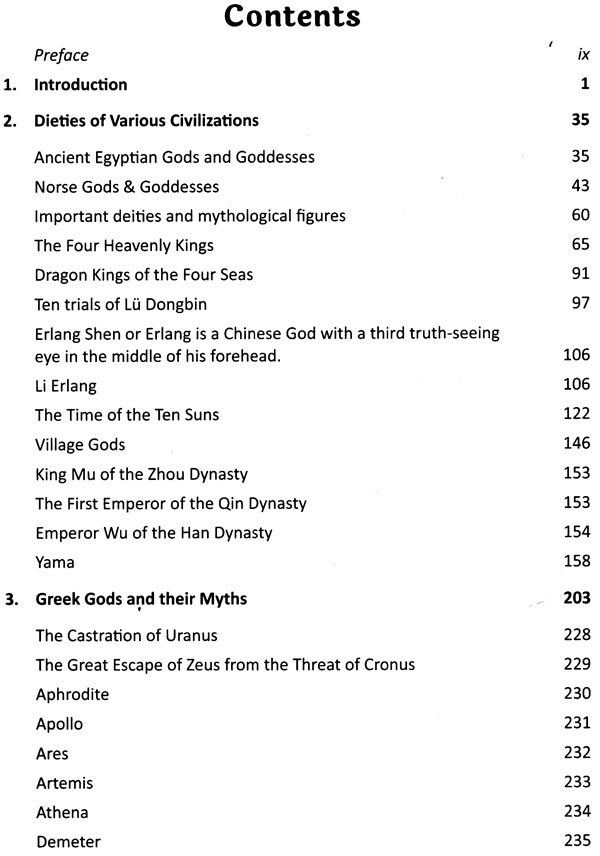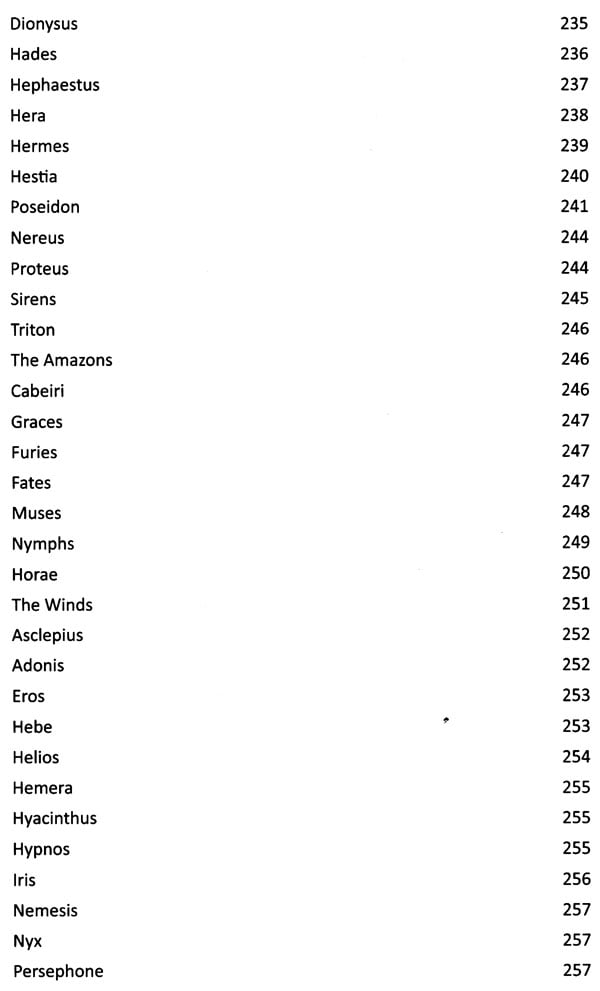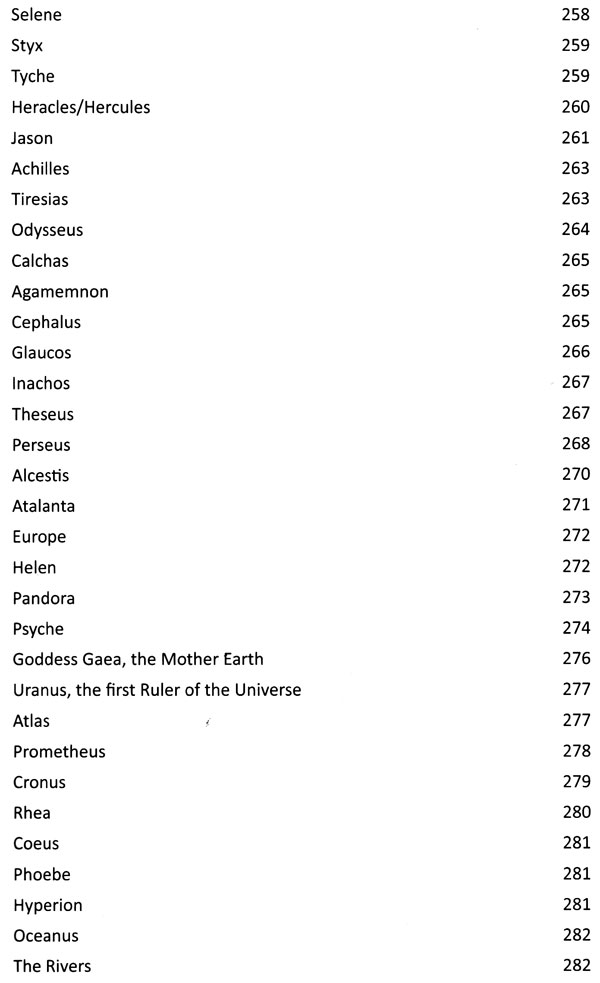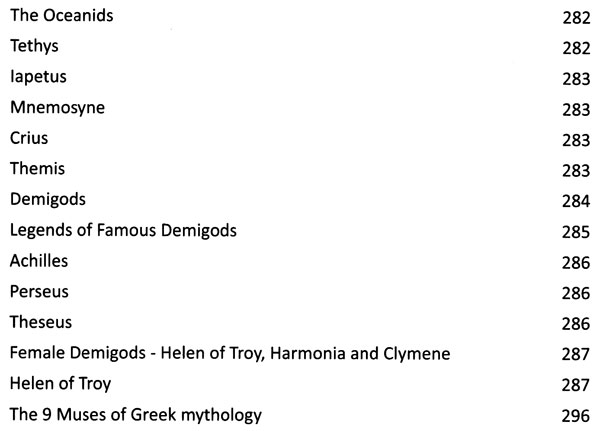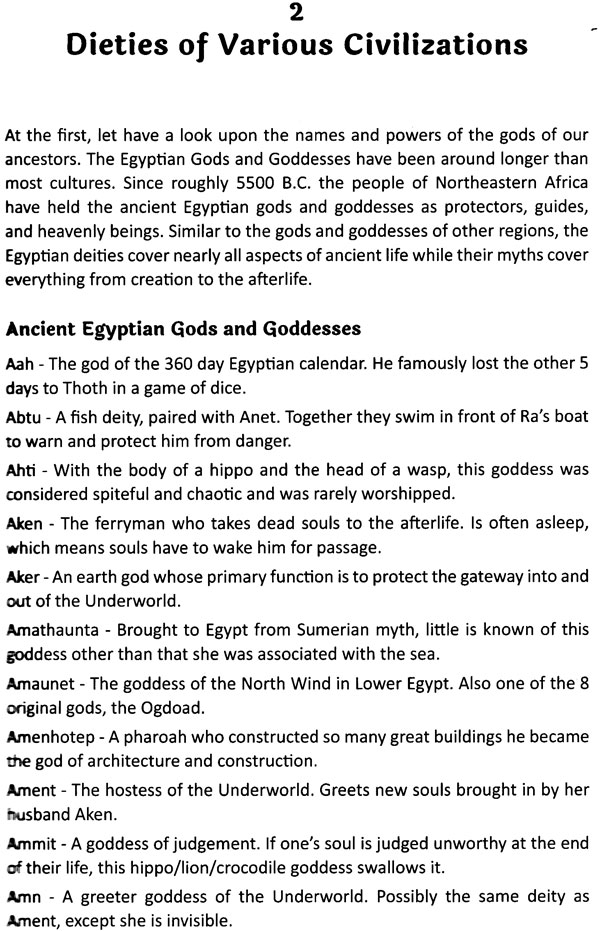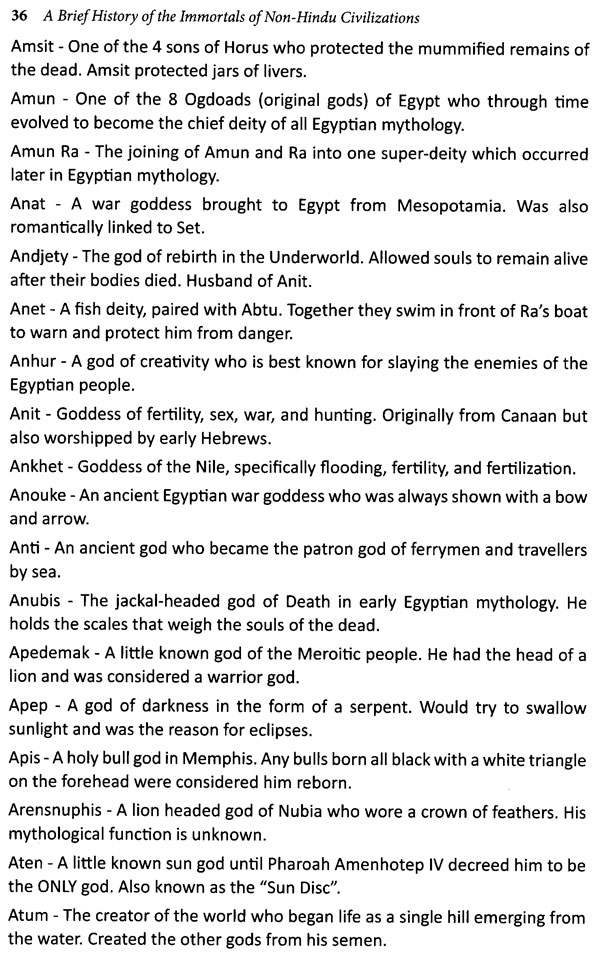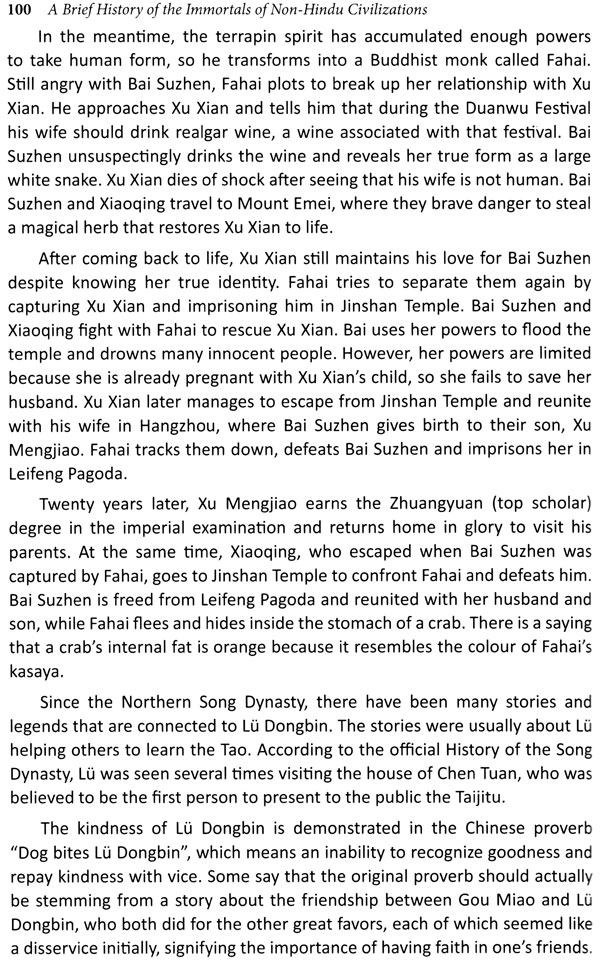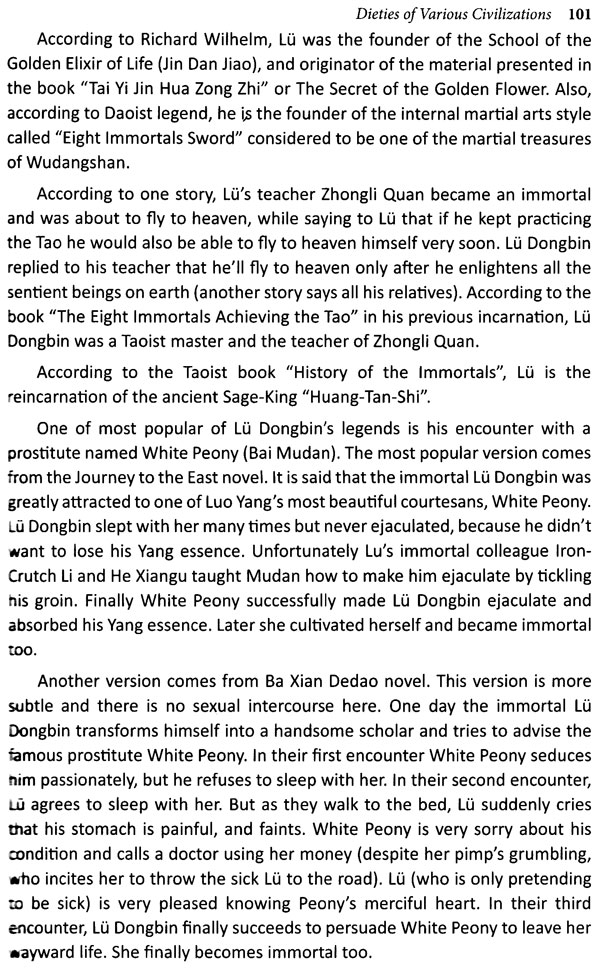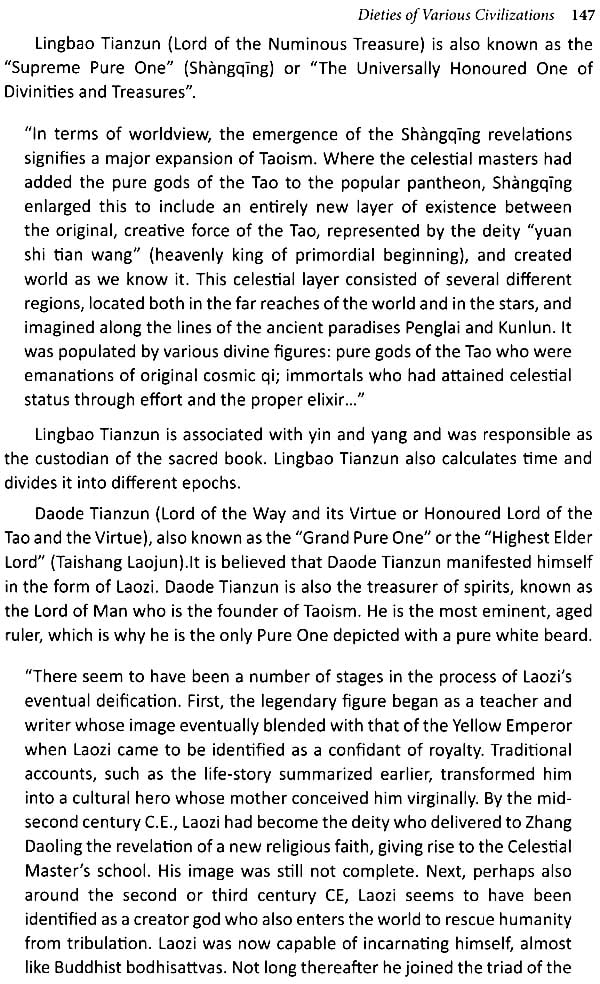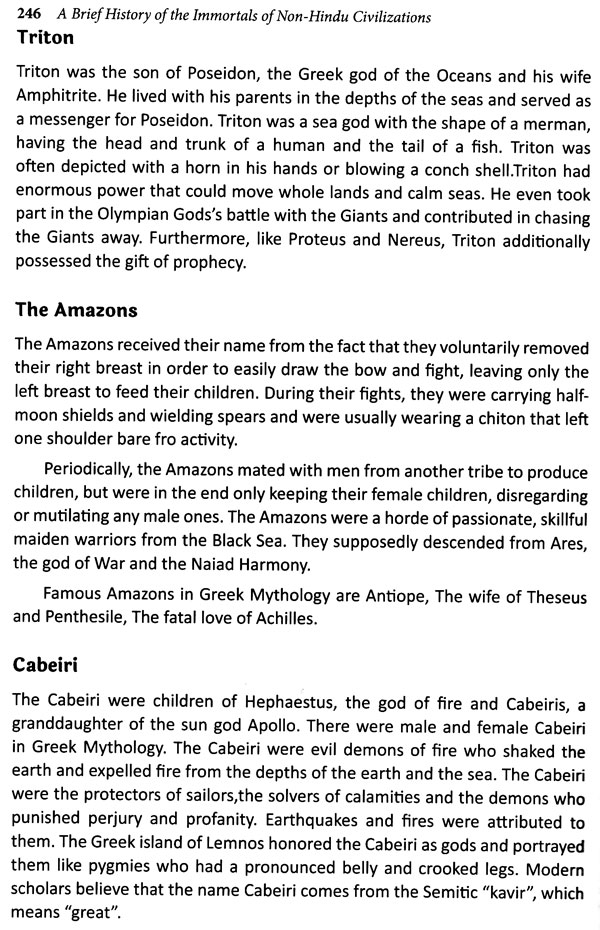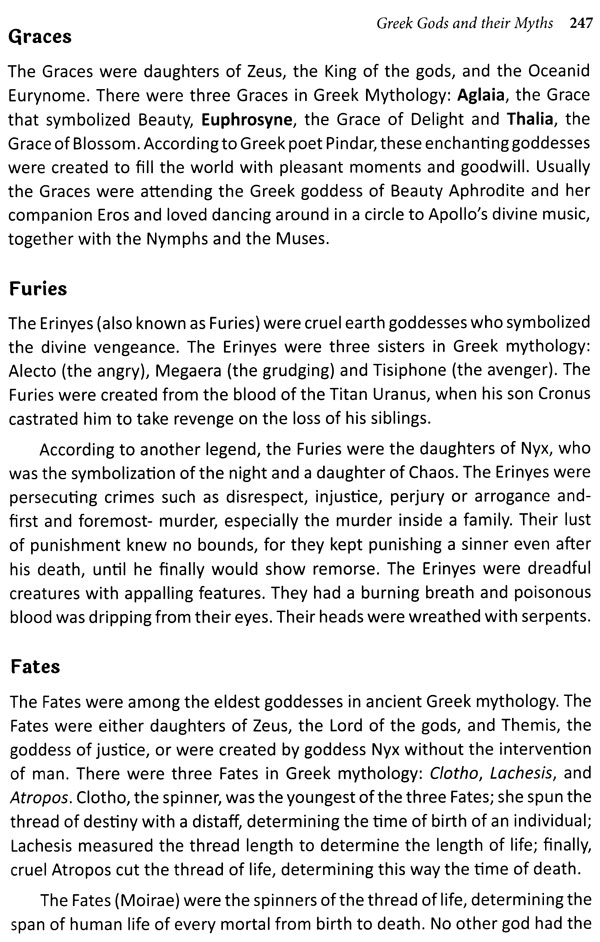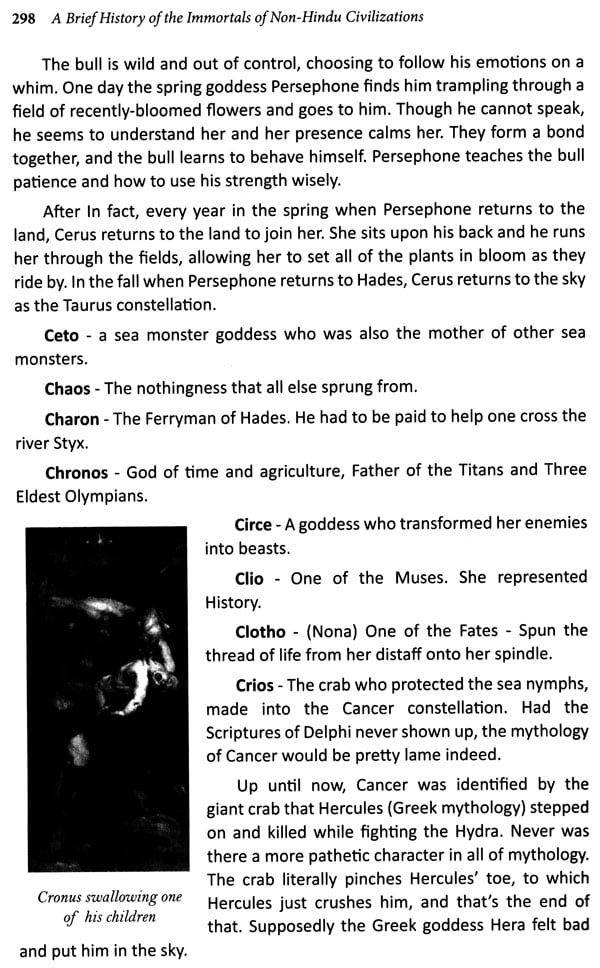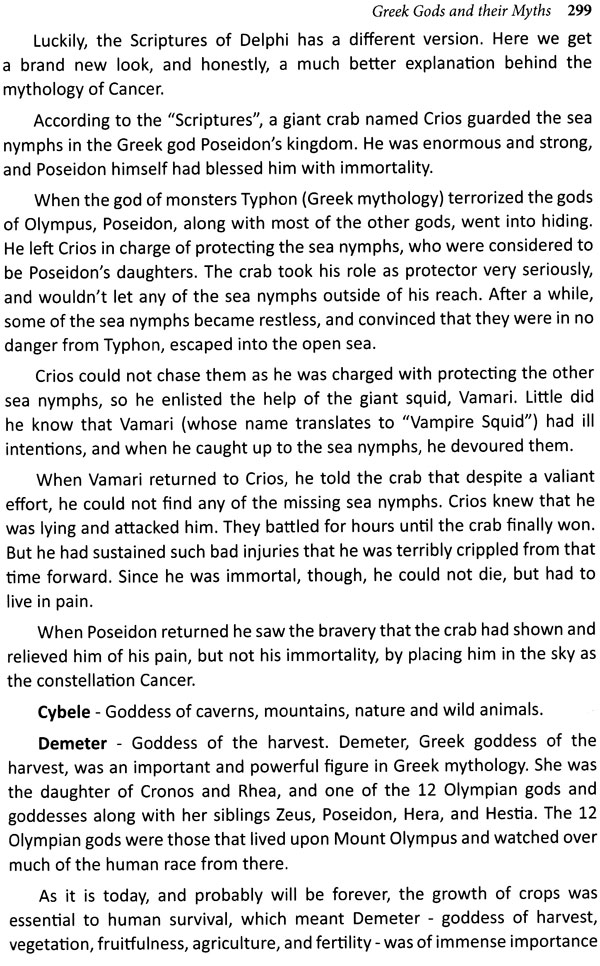
A Brief History of the Immortals of Non-Hindu Civilizations (In association with Aryavart Sanatan Vahini 'Dharmraj')
Book Specification
| Item Code: | NAR217 |
| Author: | Shri Bhagavatananda Guru |
| Publisher: | Notion Press |
| Language: | English |
| Edition: | 2015 |
| ISBN: | 9789352064533 |
| Pages: | 338 (Throughout B/W Illustrations) |
| Cover: | PAPERBACK |
| Other Details | 9.00 X 6.00 inch |
| Weight | 420 gm |
Book Description
This book contains a complete analysis of the legendary myths of civilizations like Roman, Greek, Celtic, Arabian, British, Japanese and Chinese. From the stories of the Trojan war and adventures of Hercules, Perseus and Theseus to the stories of the White Snake and Battle of Red Cliffs, this book is about the mesmerizing past of our ancestors.
Shri Bhagavatananda Guru is a renowned religious preacher and a socio-political orator from Bharat. He is the son of the famous saint and social activist Acharya Shri Shankar Das Guru. He was born into a Shakdweepiya Brahman family on 20 March 1997 in Bokaro district ofJharkhand. From the age of five, he has been preaching on various religions and has received appreciation from the honorable Governor, the assembly of Jharkhand and from various committees and organizations. Shri Bhagavatananda Guru is working as Director General in a socio-political organization named Aryavart Sanatan Vahini Dharmral and has authored more than twelve books.
From ancient culture to the so called modern world, the thing which is common is faith and fiction. In religious belief, a deity is either a natural or supernatural being, who is thought of as holy, divine, or sacred. Some religions have one supreme deity, while others have multiple deities of various ranks.
A being with powers greater than those of ordinary humans, but who interacts with humans, positively or negatively, in ways that carry humans to new levels of consciousness beyond the grounded preoccupations of ordinary life is known as Deity. Deities are depicted in a variety of forms, but are also frequently expressed as having human form. Some faiths and traditions consider it blasphemous to imagine or depict the deity as having any concrete form. Deities are often thought to be immortal, and are commonly assumed to have personalities and to possess consciousness, intellects, desires, and emotions comparable but usually superior to those of humans. A male deity is a god, while a female deity is a goddess.
Historically, natural phenomena whose causes were not well understood, such as lightning and catastrophes such as earthquakes and floods, were attributed to deities. They were thought to be able to work supernatural miracles and to be the authorities and controllers of various aspects of human life (such as birth or an afterlife). Some deities were asserted to be the directors of time and fate itself, the givers of human law and morality, the ultimate judges of human worth and behavior, or designers of the Universe. This is very much true and justified that miracles happen. Not because this is the part of book, bin I have experienced the divines and their powers personally in many Tantric and ordinary rituals performed by me.
The word "deity" derives from the Latin deus (god), which is related through a common Indo-European origin to Sanskrit deva (god), devi (goddess), divya transcendental, spiritual). The root is related to words for "sky", such as Latin dies (day), and the Sanskrit div, divus, diu ("sky, day, shine"). Also related are 'divine" and "divinity," from the Latin "divinus," from "divus."
Panel from an ancient Roman sarcophagus depicting the creation of humans by Prometheus, with deities including Minerva (Roman Athena) worship of, deities are largely a matter of religion. At present, the majority of humans are at least nominal adherents of some religion, and this has been true throughout recorded human history. Human burials from between 50,000 and 30,000 B.C. provide evidence of human belief in an afterlife and possibly in deities, although it is not clear when human belief in deities became the dominant view.
Some deities are thought to be invisible or inaccessible to humans, dwelling mainly in otherworldly, remote or secluded and holy places, such as the concepts of Heaven, and Hell, the sky, the underworld, under the sea, in the high mountains or deep forests, or in a supernatural plane or celestial sphere. Typically, they rarely reveal or manifest themselves to humans, and make themselves known mainly through their effects. Monotheistic deities are often thought of as being omnipresent, though invisible.
Often people feel an obligation or submission to their deity, although some view their deity as something that serves them.
Folk religions usually contain active and worldly deities. In polytheism, deities are conceived of as a counterpart to humans. Humans are defined by their station subject to the deities, nourishing them with prayers or sacrifices, and deities are defined by their sovereignty over humans, punishing and rewarding them, but also dependent on the, worship. This same concept is also present in monotheistic and henotheistic religions.
The boundary between human and divine in most cultures is by no means absolute. Demigods are the offspring from a union of a human with a deity, and most royal houses in Antiquity claimed divine ancestors. Beginning with Djedefra (26'" century B.C.), the Egyptian pharaohs called themselves "Son of Ra" as well as "Bull (son) of his Mother" among their many titles. One, Hatshepsut, who ruled from 1479 B.C. to 1458 B.C., traced her heritage not only to her father, Thutmose I, who would have become deified upon his death-but also to the deity, Mut, as a direct ancestor.
Some human rulers, such as the Kings of Egypt, the Japanese Tennos, and some Roman Emperors have been worshipped by their subjects as deities while still alive. The earliest ruler known to have claimed divinity is Naram-Sin of Akkad (22' century B.C.). In many cultures, rulers and other prominent or holy persons may be thought to become deities upon death. Due to what some women perceive as excessive patriarchy in monotheistic faiths, some have turned to goddesses and deities with more flexible gender roles.
A demigod is a divine or supernatural being in classical mythology. The term has been used in various ways at different times and can refer to a figure who has attained divine status after death, a minor deity, or a mortal who is the offspring of a god and a human. The English term is a claque of the Latin semideus, "half-god", which is probably a coining by the Roman poet Ovid in reference to less important gods, such as dryads.
In the ancient Greek and Roman world the word did not have a consistent definition. It was rarely used and had a number of different meanings. The earliest recorded use of the term is in the archaic Greek poets Horner and Hesiod. Both describe dead heroes as hemitheoi, "half gods". This did not mean that they had one parent who was divine and one who was mortal. Instead, according to Price, those who demonstrated "strength, power, good family, and good behavior" were termed heroes, and after death they could be called hemitheoi, a process she refers to as "heroization". Pindar also uses the term frequently as a synonym for hero.
According to the Roman author Cassius Dio, Julius Caesar was declared a demigod by the Roman Senate after his victory at Thapsus. However, Dio was writing in the third century and modern critics have cast doubt on this. The first Roman to employ the term demigod may have been the poet Ovid who used the Latin semideus several times in reference to minor deities. The poet Lucan also uses the term to speak of Pompey attaining divinity upon his death. In later antiquity, the Roman writer Martianus Capella proposed a hierarchy of gods: the gods proper, or major gods; the genii or daemones; the demigods or semones (who dwell in the upper atmosphere); the manes and ghosts of heroes (who dwell in the lower atmosphere); and the earth-dwelling gods like fauns and satyrs.
Demigods are important figures in Rick Riordan's Percy Jackson books, where many of the characters, including Percy Jackson himself, are demigods. In Riordan's work, a demigod is strictly defined as an individual born of one human and one divine parent. Greek mythology is the body of myths and teachings that belong to the ancient Greeks, concerning their gods and heroes, the nature of the world, and the origins and significance of their own cult and ritual practices. It was a part of the religion in ancient Greece. Modern scholars refer to and study the myths in an attempt to shed light on the religious and political institutions of Ancient Greece and its civilization, and to gain understanding of the nature of myth-making itself.
**Contents and Sample Pages**
